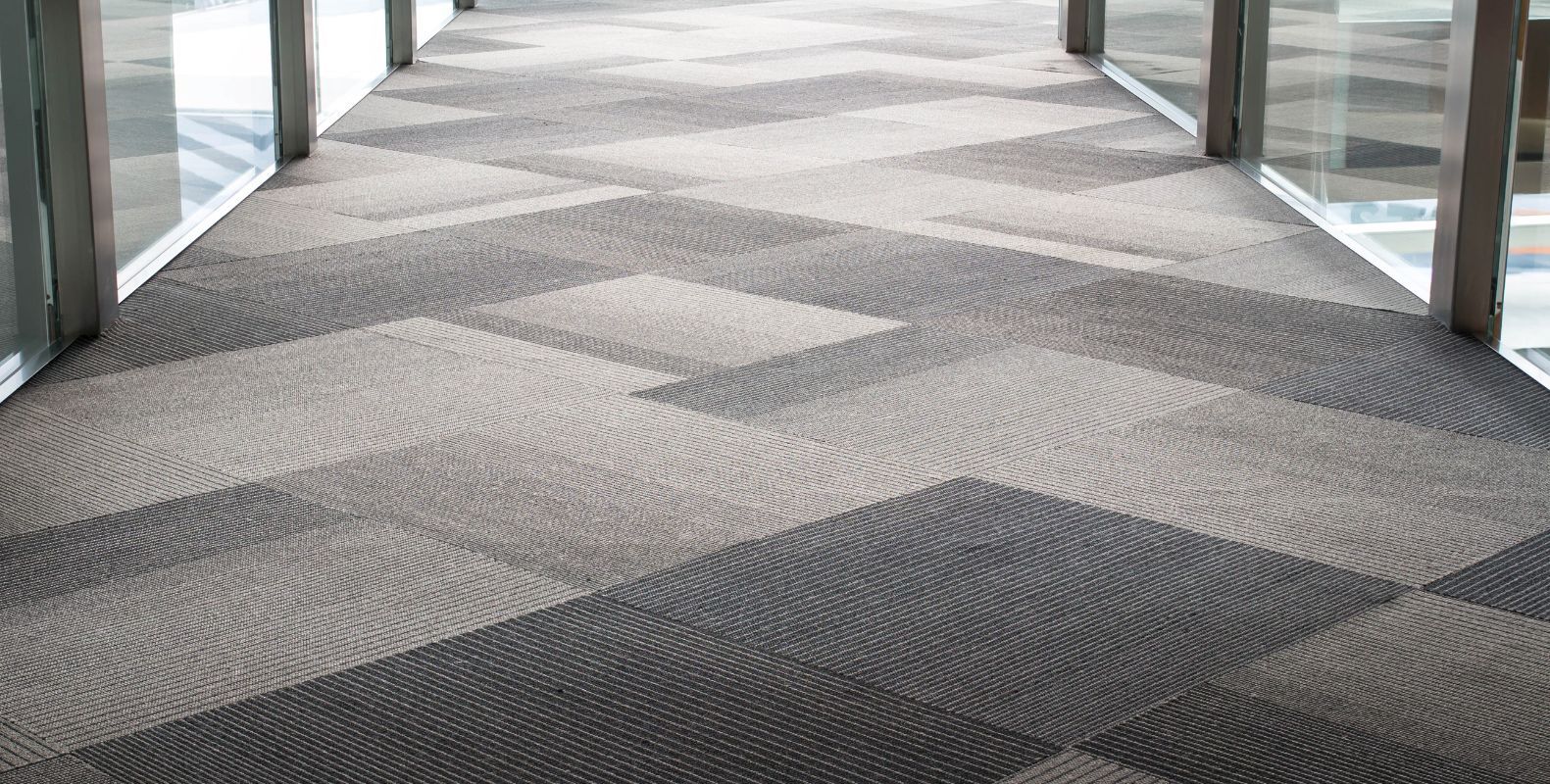Snow, Salt, and Slush: Protecting Your Carpets from Winter’s Mess

Winter brings beauty in the form of freshly fallen snow, but all that whiteness quickly turns to an overwhelming mess of slush and salt that can irreparably damage your carpets. In this article, we’ll take a look at “The Triple Threat: Snow Salt and Slush” and discuss the preemptive measures necessary for carpet protection, effective cleaning techniques for salt and slush stains and post-winter carpet care: regaining freshness.
The Triple Threat: Snow Salt and Slush
The winter season is a hazard for those who drive, especially in areas with snowy climates. The occurrence of snow, salt, and slush can create difficult situations for motorists on roads. Therefore, it is important to understand the characteristics of each of these trepidations in order to drive safely.
Snow is the precursor to the other two threats. It typically falls in cold temperatures and is generally the first to accumulate on the roads. Snow can come in many forms and can be anything from powdery snow to wet, heavy snow. The type of snow will determine the difficulty or ease of traversing the road. For instance, powdery snow is hard to drive in because the wheels of the vehicle will spin without any traction. However, wet snow is more likely to adhere to the road, providing more traction for vehicles.
Salt, similar to snow, is spread on roads in cold temperatures. Its purpose is to prevent snow and ice from sticking to the roads and to create traction when snow starts to thaw. Salt can help to make roads more passable but it tends to damage the environment, vegetation, and people’s shoes and clothes. In addition, salt corrodes cars and raises issues of public health.
Lastly, slush is a result of the combination of snow and salt. At its onset, slush appears as wet snow with very little traction but it can quickly and easily become a sheet of ice when temperatures drop. Drivers should be wary of slush as it is much slicker than snow and can cause more accidents.
Understanding the characteristics of each of these winter elements is an essential component of safe driving in parts of the country with snow-prone climates. Thus, drivers should always prepare for these challenging conditions to ensure a safe trip.
Preemptive Measures for Carpet Protection
Preemptive measures for protecting carpets are essential in order to ensure that carpets maintain their beauty and quality over time. The most important measure is regular vacuuming, which removes dirt, dust, and pet hair that accumulates in the fibers. Regular vacuuming should be done at least once a week for high traffic areas. Further, carpets should be protected from sunlight, as ultraviolet rays are damaging to fibers. To accomplish this, curtains and blinds should be used to prevent direct sunlight. Similarly, carpets should be professionally deep cleaned periodically. This involves hot water extraction, which is the most effective method for removing deep embedded dirt and bacteria.
On the other hand, furniture items should be placed on felt pads or carpet protectors to prevent friction between heavy objects and the carpet. In addition, regular maintenance of spills should be done as soon as possible. Spills should be blotted up with a towel, then a carpet-safe cleaning detergent should be applied and gently brushed in. To prevent staining, rinsing with lukewarm water is recommended and the area should then be left to air dry. Last but not least, shoe traffic should be minimized in carpeted parts of the home. Using a shoe rack at the entrance of the home but still inside is a good way to keep surfaces from getting tracked with dirt.
In conclusion, with regular vacuuming, protection from sunlight, professional deep cleaning, furniture protection, quick response to spills, and less shoe traffic, carpets can be successfully protected are maintained for a longer period of time.
Effective Cleaning Techniques for Salt and Slush Stains
Cleaning salt and slush stains can be a challenge, however with the right cleaning techniques, you can remove even the toughest dirt and grime. The first and most important step is getting the right cleaning supplies. These can include a brush or scraper, a vacuum cleaner to remove large particles, and special cleaning and caring detergents tailored for removing salt and slush stains. Additionally, you may want to purchase a professional steam cleaner for highly contaminated areas.
On the other hand, if you don’t have access to a professional steam cleaner, it is possible to clean salt and slush stains with a more traditional approach. First, remove all the debris by hand or with a brush and vacuum. After the debris is gone, it is time to start cleaning the area with detergent and a sponge. When you’re done, rinse away the soap and any leftover grime with water.
In addition, there are other unique methods for removing salt and slush stains. For instance, for carpets and upholstery, you can sprinkle baking soda over the stain, let it sit for a few minutes, and then vacuum it up. The baking soda will help to deodorize the area while also aiding in the removal of stains. Similarly, for hardwood, laminate, and tiled surfaces, you can use a mixture of vinegar and warm water to remove any buildup.
The type of cleaning supplies you use is also important. Use the right type of cleaner for the surface, such as a general purpose cleaner for tile and a glass cleaner for windows. Also, for extremely tough stains, you may need to use a stronger cleaner such as a degreaser. As a result, when dealing with salt and slush stains, it’s important to choose the right cleaning supplies for the job.
Consequently, with the right supplies and a bit of elbow grease, you can successfully remove salt and slush stains from any surface. Always make sure to read the label of any chemical cleaners before use, as some contain harsh ingredients that may cause damage to your items. Additionally, some surfaces may require special cleaning methods, so always research what is best for each material.
Post-Winter Carpet Care: Regaining Freshness
In order to keep carpets in good condition after the winter months, post-winter carpet care is essential. One of the first steps is to vacuum regularly, focusing especially on high-traffic areas. This helps to remove the dirt and dust that builds up during the winter months. For best results, carpets should be vacuumed once per week to maintain their freshness.
Deep cleaning is also necessary. This can be done by hiring professional cleaners, or by renting a steam cleaner. Steam cleaning is highly efficient in getting rid of dirt and odors that become embedded in the fibers of the carpet. This should be done every few months in order to keep carpets looking their best and to eliminate unpleasant smells.
In addition, deodorizing the carpets is beneficial. This can be achieved with store-bought solutions or by making homemade cleaning mixtures. If using a store-bought solution, it is important to pay attention to the instructions and not to use too much, as it can cause discoloration of the carpet. Homemade remedies such as baking soda can be sprinkled liberally on the carpets and left for several hours before being vacuumed up. This helps to remove some of the odors from the fibers of the carpet.
It is a good idea to check for any mold or mildew in the carpets. This is especially necessary if the carpets within the home were exposed to moisture at any point during the winter months. Mold and mildew can cause unpleasant odors as well as health issues. If this is found, a professional carpet cleaner should be hired to remove it.
As a result of following these steps, homeowners will be able to keep their carpets clean through the winter months, and beyond. Post-winter carpet care requires regular maintenance in order for carpets to remain in a good condition. With the right approach, carpets can remain looking fresh and smelling great for years to come.
Final THoughts
In conclusion, the snow, salt and slush that characterize wintertime can bring unwelcome damage to carpets. However, with a few preemptive measures and effective cleaning techniques, it is possible to protect carpets and ensure that they emerge unscathed from the impending winter season. To that effect, strategies such as covering carpets, vacuuming regularly to remove dirt, and immediate and thorough cleaning of affected areas can help to significantly reduce winter carpet damage. Finally, once the winter season is over, post-winter carpet care such as spot cleaning, extraction of liquid substances, and deep cleaning to remove accumulated dirt can help to restore carpets to their original freshness and vibrancy.
FAQ
Why is salt particularly damaging to carpets?
Salt can be damaging to carpets for several reasons:
- Abrasive Nature: Salt crystals are abrasive and can scratch and wear down carpet fibers over time, leading to a dull appearance.
- Staining: When salt comes into contact with moisture, it can dissolve and create a solution that may leave behind white or discolored stains on carpets.
- Corrosion: Some types of salt, like rock salt or calcium chloride, can be corrosive when they come into contact with carpet fibers, causing further damage.
- Residue Buildup: If not properly removed, salt residues can accumulate in the carpet, attracting more dirt and making it harder to clean.
How can I protect my carpet from foot traffic bringing in snow and slush?
To protect your carpet from winter-related damage, consider these steps:
- Use Mats: Place heavy-duty mats or rugs at entry points to trap snow, slush, and salt before it reaches your carpet.
- Remove Footwear: Encourage family and guests to remove wet shoes and boots before entering your home to minimize moisture and salt exposure.
- Regular Cleaning: Vacuum your carpet frequently to prevent salt and dirt buildup, and consider professional carpet cleaning services for deep cleaning.
What home remedies are safe for removing salt stains?
You can use these safe home remedies to remove salt stains from your carpet:
- Vinegar Solution: Mix equal parts white vinegar and water, apply it to the salt stain, and blot with a clean cloth. Rinse with plain water and blot dry.
- Baking Soda Paste: Create a paste with baking soda and water, apply it to the stain, gently scrub, and then vacuum the area once it dries.
- Club Soda: Pour club soda onto the stain, blot with a clean cloth, and repeat until the stain disappears. Rinse with water and blot dry.
- Dish Soap Solution: Mix a few drops of mild dish soap with water, blot the stain with the solution, and rinse with plain water. Blot dry.
How often should I clean my carpets during the winter months?
During the winter months, it’s a good idea to increase the frequency of carpet cleaning to prevent salt and dirt buildup. Here’s a general guideline:
- High-Traffic Areas: Vacuum these areas at least 2-3 times a week to remove debris and prevent salt buildup.
- Entire Carpet: Consider a deep carpet cleaning, such as steam cleaning or hot water extraction, every 6-12 months. In winter, you may want to schedule a cleaning at the beginning and end of the season for added protection.






